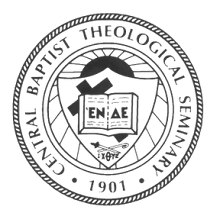One looking for the traditional site of the Ascension may get more than anticipated! During a summer of my M.Div. studies, I lived on the Mount of Olives with a family while doing student work in East Jerusalem. I enjoyed walking the mountain’s terraced sloped, poking around among the old olive trees, seeing what of historical of geographical interest I could discover. One afternoon as I approached the north end of the crest of Olivet, near where the little village of Bethphage once stood, I stumbled onto a marker noting the spot as the traditional site of the Ascension. I was a bit surprised; hadn’t I just seen that recently—a little further north on the eastern slope of the mount—closer to Bethany? Surely there were not two sites!
Just this one time, couldn’t we be sure about where something happened in the Holy Land? Actually, the exact location—or exact date--is not the most important thing. The affirmation of the completion of Jesus’ mission and the beginning of the church’s mission is what matters.
Baptists and other free church traditions give scant notice to Ascension Day, celebrated this year on May 17th. Yet it marks a significant shift in understanding how the Risen Christ is both present and absent, ascended to God while dwelling in the midst of the embryonic church. Luke alone narrates his departure forty days after the resurrection, ending his intimate time with the disciples, full of instruction about the meaning of his resurrection and their role in bearing witness throughout the earth.
After commissioning them, “he was lifted up, and a cloud took him out of their sight” (Acts 1:9). Students of the Bible know that when a cloud appears, it usually signals a theophany, a revealing and concealing of the mysterious actions of God.
Is there further meaning to ascension that might assist believers as they seek to “lived resurrected?” Attested by Scripture and an article of faith in the Apostles’ Creed, the ascension testified that Jesus’ humanity was of enduring validity, and that humanity marked by death, makes an eternal home with God. Ascended to a place of exaltation “at the right hand,” the one who rose with his wounds (as Moltmann is fond of saying), serves as broken humanity’s knowledgeable advocate. Even in his triumphant exaltation, he continues to function as our servant, taking our woundedness upon himself. His glory is always bound up with his self-emptying. Luther pictured Jesus’ heavenly session as his continuing statement to humanity: “Your sin is mine and my innocence is yours.”
We have a friend where it counts most! God opens the divine life to us in the human person of Jesus; his ascension promises that we, too, will be drawn into eternity with God, through death to life. You and I groan for our deepest longings, to be at one with God and one another, to be actualized; we yearn for our faith to become sight.
The promise of the two witnesses who chided the disciples for their lingering gaze upward was that the Risen Lord would gather his followers unto himself. His physical absence did not mean abandonment, rather a new mode of presence in an expansive reign.
Molly T. Marshall
To learn more about Central’s mission to educate persons who are biblically knowledgeable and theologically articulate, continue visiting our website.

No comments:
Post a Comment